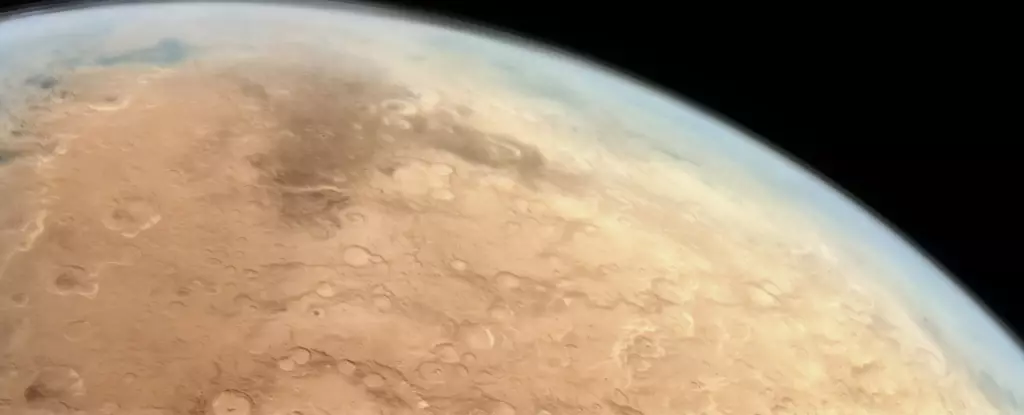The myth of Mars as a once-hospitable utopia is gradually collapsing under scientific scrutiny. For decades, we’ve envisioned Mars as a planetary landscape punctuated by ancient rivers and lakes, hinting at fleeting windows where life might have found a foothold. Recent discoveries amplify this narrative but also challenge our assumptions about the planet’s habitability. The evidence from NASA’s rovers, especially the detection of carbonate minerals, paints a picture of a planet that briefly flirted with life before succumbing to relentless cold and dryness. These findings reveal that while Mars experienced short-lived episodes where conditions might have supported liquid water, such moments were rare and transient—mere blips on a predominantly barren landscape.
What is truly fascinating—and somewhat disheartening—is the mismatch between the fleeting presence of water and the planet’s inability to sustain a stable climate. Unlike Earth, Mars lacked a vigorous volcanic cycle to recycle carbon dioxide efficiently back into the atmosphere. This deficiency prevented a consistent greenhouse effect, leading to a cold and treacherous environment that could rarely maintain liquid water on its surface. While Earth’s dynamic interior ensures a balanced carbon cycle that fosters long-term habitability, Mars’s sluggish geology condemned it to a frozen desert, with only ephemeral pockets capable of momentary liquid water.
The Role of Carbonates and Climate Imbalance: Why Mars Was Doom’d
The discovery of carbonate minerals on Mars signifies more than just the presence of water—it underscores the planet’s struggle to maintain a stable, warm environment conducive to life. On Earth, carbonates act as a natural thermostat, absorbing excess atmospheric CO₂ during warm periods and releasing gas through volcanic eruptions, thus stabilizing climate fluctuations over geological timescales. Mars, on the other hand, appears to have experienced a radical imbalance due to its feeble volcanic activity. The minimal outgassing meant CO₂ was stored in rocks rather than recycled, causing the atmosphere to thin and grow colder with time.
This climate destabilization had dire consequences for the planet’s ability to sustain water—any transient lakes or rivers would eventually evaporate or freeze away as the atmosphere lost its greenhouse potential. The implication is clear: Mars never developed the stable, life-supporting environment necessary for more than sporadic microbial habitats. It was a universe with the ingredients of life, but lacking the critical mechanism to nurture and preserve the conditions for life’s persistence.
Implications for the Search for Extraterrestrial Life: A Cosmic Perspective
The ongoing missions to Mars, including NASA’s Perseverance rover, are more than just paleontological digs—they are a window into the likelihood of finding life beyond Earth. Discovering carbonate-rich rocks at ancient lakebeds is a promising clue. These minerals could harbor chemical signatures of past life or, at the very least, provide insights into Mars’s climatic evolution. Yet, the evidence points to a stark reality: Martian habitability was fleeting, and the planet’s environmental conditions were always on the brink of becoming inhospitable.
The potential of retrieving Martian rock samples and analyzing them on Earth opens new horizons. Such mission endeavors could conclusively answer whether life ever took hold on Mars or if, instead, the planet remained a dead, cold desert from inception. If Mars lacked even primitive life, it would argue that the emergence of life is an exceedingly rare process—something that might be unique to Earth. Conversely, evidence of past microbial life would have profound implications, suggesting that life’s genesis is not just possible but perhaps inevitable given the right conditions.
From a broader perspective, Mars embodies the fragility of habitable worlds in the universe. Studying its history informs us about the delicate balance necessary for a planet to develop and sustain life. It compels us to appreciate Earth’s unique resilience and to question whether other planets might be doomed by similar geological or atmospheric shortcomings. The unsettling truth might be that planets like Earth are rare gems, capable of maintaining long-lasting habitable conditions amidst a universe filled with hostile environments.
The Race for Answers and the Future of Astrobiology
As humanity races to collect and analyze samples from the Martian surface, the question of life’s cosmic ubiquity hangs in the balance. The next decade promises critical breakthroughs—either confirming that Mars was a transient oasis or revealing a planet that was fundamentally too cold, dry, and geologically inert to host life. These discoveries will shape our understanding of planetary evolution and our expectations for discovering life elsewhere.
The challenge remains monumental: deciphering the complex interplay of geology, climate, and planetary dynamics that favors or hinders life’s development. Mars’s story is a testament to the intricate balance required for habitability, a narrative that might be more fragile than previously assumed. As we peel back the layers of Martian history, what we learn may redefine the boundaries of life in the universe, pushing us to reevaluate how common—or rare—such worlds truly are.


Leave a Reply